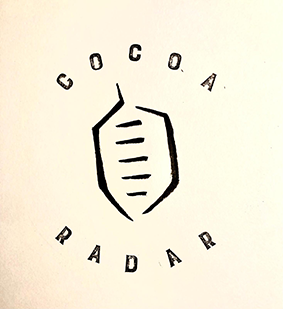ICI’s members, which include cocoa and chocolate companies, civil society organisations, international organisations and farmers’ organisations, through CLMRS have proven effective in identifying, addressing, and preventing child labour and its latest results from October 2022 to September 2023 period show that over 1 million smallholder cocoa-farming households across West Africa (Cote d’Ivoire, Cameroon, Ghana, and Nigeria) were covered by the platform.
The results from the latest Members Reporting Exercise indicate that 71% of CLMRS had operational links with local or national authorities, and nearly half reported data on child labour to these authorities.
ICI’s Executive Director, Matthias Lange, said: “The results from ICI’s members are promising, showing extensive coverage, improved identification of children in child labour, and greater support provided to them, as well as strong collaboration with local and national authorities.
“We need to continue building on this progress, and as these systems won’t solve child labour alone, we need to make sure they are accompanied by the necessary government policies and investment.”
CocoaRadar Comment
The issue of child labour in the cocoa sector of West Africa remains significant, particularly in Cote d’Ivoire and Ghana, which together produce approximately 60% of the world’s cocoa. By the ICI’s own estimates, there are approximately 1.56 million children engaged in child labour on cocoa farms in these two countries. This represents around 45% of children in cocoa-growing households, with the work often involving hazardous tasks such as handling sharp tools and carrying heavy loads.
It is a fact that root causes of child labour in this sector are closely tied to extreme poverty. Families often rely on child labour because they cannot afford to hire adult workers, and children’s contributions are seen as essential to supplement the household income. Other factors, such as the scarcity of schools and the seasonal nature of cocoa farming, exacerbate the problem.
Initiatives like the ICI’s excellent Child Labor Monitoring and Remediation Systems (CLMRS), help identify and address cases of child labour, but despite these efforts, challenges remain, with over 2.1 million children still involved in the cocoa sector across West Africa.
More efforts are needed to combat child labour, including programmes focused on improving incomes for smallholder farmers, education access, and community engagement, which are essential to reducing these numbers.
The ICI report revealed that within these systems, approximately 215,000 children were identified in child labor, representing roughly 15% of children covered. Once identified, support can be provided to help these children stop engaging in child labour and improve their situation.
More than 540,000 children have received support to help prevent or remediate child labour. This number is significantly higher than those found in child labour, as many remediation activities are organised at a community level (such as investment in education), and therefore benefit more children than only those identified in child labour.
The report highlights examples of support that include targeted awareness raising and counselling, assistance in covering school costs (uniforms and books), supporting children to get birth certificates (required to access secondary education in Cote d’Ivoire), investing in education infrastructure, cash transfers, and the development of alternative income-generating activities for cocoa-farming households.
The ICI said follow-up visits are critical to ensuring continued and sustained improvement. Based on systems where data on two follow-up visits was available, results indicate that about 38% of the children found in child labour were no longer engaged in such activities after two consecutive visits.
The ICI said in a statement: “While these results are encouraging, they highlight that no one approach alone can eradicate child labour. The persistence of child labour, despite support, points to the need for continued and multifaceted approaches, including government policies and investments that provide access to essential services like healthcare, education, and social protection.”
ICI members, in addition to supporting NGOs, communities and farmer organisations, are also working closely with local and national stakeholders to strengthen the overall framework for child labour prevention and response.
“Collaboration is key. The fight for human rights and improving children’s futures in cocoa producing regions is a shared responsibility, and with continued collective action, we can achieve lasting change,” said Lange.

